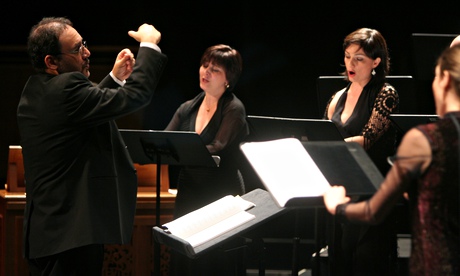
There are few performers better-versed in the music of Claudio Monteverdi than Rinaldo Alessandrini and the ensemble he founded 30 years ago, Concerto Italiano. In 2007 they brought a five-part madrigals series to Edinburgh; this year their visit was all-too-brief – a single concert done and dusted in less than an hour. I could have happily sat through several times that.
The great appeal of Concerto Italiano's playing (and singing, though in this instance their instrumentalists outshone their vocalists) is how natural and unmannered it sounds. Take Alessandrini's harpsichord playing: his touch is simple, clean, spacious, full of buoyancy. He revels in Monteverdi's outlandish harmonies with a terrific sense of pacing and flux, but he limits extravagant ornamentation, which is no bad thing.
This was a finely shaped programme of Monteverdi songs interspersed with instrumental numbers, mainly dances from the early 17th century northern Italian string school. Marini's Passacaglia a quattro was poised, dark-hued and expressive. Uccellini's Bergamasca showcased the group's superb violinists, Elisa Citterio and Nicholas Robinson, who traded their lines with the loose spontaneity of folk fiddlers. Castello's Sonata XVI a quattro had real bounce to its metre and earthy grit to its textures.
The heftiest work on the programme was Monteverdi's Combattimento di Tancredi e Clorinda, a meaty operatic scena for three voices from the composer's extraordinary final book of madrigals. This is highly dramatic, raunchy storytelling; its breathless account of a First Crusade battle is basically an excuse for thinly-veiled erotica. Luca Dordolo, the tenor, kept the narrative crisp and fluid and mercifully didn't over-egg the lewd imagery; the soprano, Anna Simboli, together with the tenor Gianluca Ferrarini, made sweet-voiced contributions but their voices were on the small side for Greyfriars. Mostly, it was the bold and stylish instrumental playing that gave this performance its brilliant vivacity.

